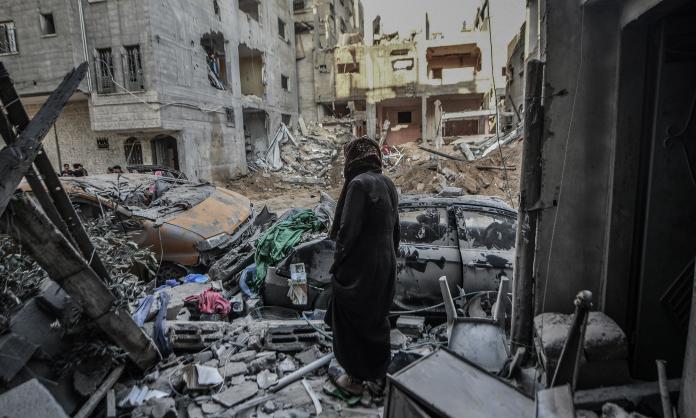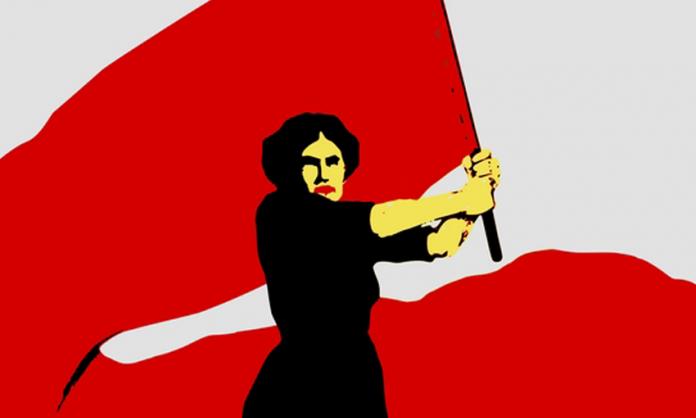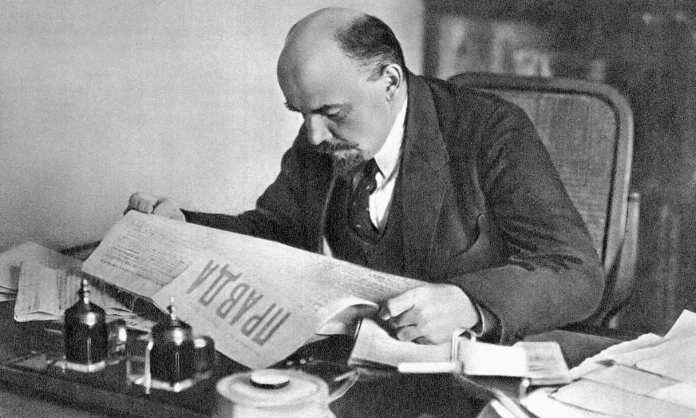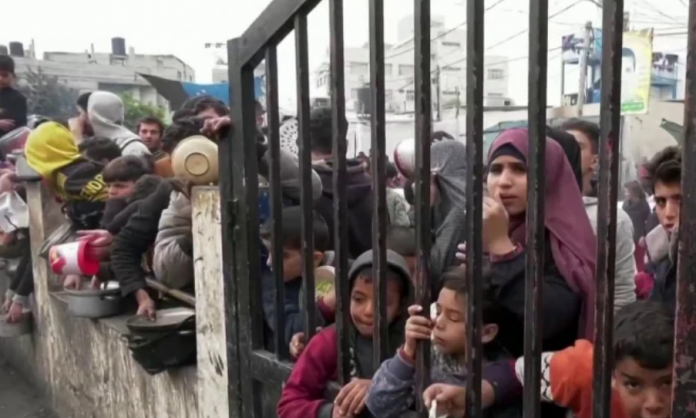Revolution has always been necessary to achieve radical change.
The establishment of capitalism required revolutions and civil wars to wrest power from the old feudal order, with the French revolution the most well-known example. The struggle to abolish slavery was launched by the Haitian revolution of 1791-1804 and ended in the United States only following the civil war of 1861-65. Several waves of revolution brought independence from colonial rule in Mexico, India, Algeria and Indonesia, and revolutionary struggle overthrew apartheid in South Africa.
To abolish capitalism, we also need a revolution – but a different one from those that have gone before. Not one that replaces one ruling minority with another, but one that creates a society in which the majority rule. A society in which democracy permeates every workplace and neighbourhood so that the mass of people who do the work to produce society’s wealth have day-to-day control over how it is used.
The economic elite have amassed unfathomable wealth. Just 26 individuals (down from 43 in 2017) hold the same wealth as 3.8 billion people. More than 9 million people starve to death every year, while the richest 1 percent stash an estimated $32 trillion in offshore tax havens.
Capitalism depends for its obscene profits on the collective labour of the working class. This is why the rich constantly dream up new ways to intensify working life by cutting wages, making workers work harder and chipping away at entitlements.
It is also why capitalism can’t ever be genuinely democratic: the interests of the majority are diametrically opposed to those of the wealthy elite. If the majority had the right to decide how society’s wealth was used, the Adani coal mine would not be built, public assets would not be sold and casinos wouldn’t get the green light ahead of hospitals, schools or public housing. Instead, the rich make these decisions in their boardrooms and in parliamentary offices.
Parliament most of the time is a useful smokescreen for the 1 percent. Elections give a democratic veneer to a system in which a minority make the decisions, usually without reference to the will of the majority.
The major parties compete to form government but agree on almost everything else. Labor leader Bill Shorten’s commitment to honour the Adani coal mine contracts – despite popular opposition – is a typical expression of this. The economy’s AAA credit rating, protecting its key industries and attracting investment from climate criminals, trumps the future of the planet.
While revolutionary socialists look to the radical potential of working class struggle, reformists hope to use the state to gradually transform capitalism through redistribution. Because their goal is limited to passing legislation and other changes within the framework of capitalism, even relatively radical reformists do not threaten the system of exploitation.
Jeremy Corbyn, for example, shocked the establishment when he won the leadership of the British Labour Party in 2015 by advocating a program of free university, nationalisation of rail and increased corporate taxes. But Corbyn’s capitulations since then show the limits of a reformist strategy. He has backed down on scrapping the Trident nuclear program and accepted immigration controls after decades of anti-racist activism.
And this is before Corbyn’s Labour has even formed government. When in power, reformists are under even more pressure to abandon any redistributive measures that go beyond what the 1 percent will accept.
In government, reformist socialists are either transformed into responsible managers of capitalism or they are brought down by unelected bureaucrats, economic sabotage or coups. As Polish-German Marxist Rosa Luxemburg wrote in 1918:
“It is sheer insanity to believe that capitalists would good humouredly obey the socialist verdict of a parliament or of a national assembly, that they would calmly renounce property, profit, the right to exploit.”
The capitalists have shown themselves willing to undermine, suspend or overthrow parliamentary democracy time and again when it threatens their profits.
The 1975 soft coup against Gough Whitlam’s Labor government is an example. In 1974, during a global recession, Australia’s strike levels surged. The capitalist class hoped Whitlam could use his influence to rein in workers and roll back social spending. When he failed, the governor general dismissed the government and installed the Liberals as caretakers with Malcolm Fraser as prime minister. In anticipation of a popular revolt, the army was put on stand-by, ready to crush any democratic uprising.
In Chile in 1973, a much more radical reformist government was liquidated and the popular prime minister, Salvador Allende, murdered in a bloody military coup led by general Pinochet. Almost overnight Pinochet, backed by the Chilean capitalist class, destroyed one of the world’s most established parliamentary democracies, killing tens of thousands and ushering in 30 years of dictatorship.
The disaster in Chile was a shocking reminder of the ruling class power hidden beneath the surface of parliamentary democracy: the ability to unleash economic sabotage and state violence to defend the capitalists’ privileges.
Most of the time, though, bloody coups have not been needed to stop progressive government policies. Instead, those seeking reform cave in pre-emptively to the pressure of the capitalist class.
In 2015, for example, the people of Greece voted against an austerity package being pushed by the European powers and the Greek capitalist class. Their hopes for relief from relentless attacks on living standards were betrayed by not one but two reformist parties: the established social democratic party Pasok in 2011, then Syriza, the “coalition of the radical left”.
Syriza, a reformist party that emerged out of a radical movement against austerity, rapidly became one of the most faithful enforcers of the neoliberal policies of the European bailout program. Even a referendum that rejected another round of austerity with a 61 percent “no” vote resulted in the negotiation of the worst austerity package Greece had seen to that point.
Marx argued that class struggle is “the motor force of history”. While history books focus on the actions of governments and powerful individuals, almost every major social reform has involved mass struggle: from the battle for the eight-hour day, the Gurindji strike for Aboriginal land rights and the ending of wars.
Through collective struggle, workers gain a sense of their power, forge links of solidarity and become conscious of the necessity to wrest power from the capitalist class. Because the working class encompasses all genders, races, sexualities and oppressed groups, it can unite people in solidarity against our common oppressors. Faced with united struggle, reactionary ideas and seemingly all-powerful institutions of coercion have been swept aside.
Australia witnessed this capacity for radical struggle in the 1970s, with unions like the Builders Labourers Federation. The BLF took a stand for gay rights, supported the Aboriginal Tent Embassy and took strike action to defend the environment. The BLs’ militancy went beyond striking for pay and safety on the job – they argued that workers should have power over production, and they used militant strikes to implement this. As NSW BLF leader Jack Mundey said:
“Yes, we want to build. However, we prefer to build urgently required hospitals, schools, other public utilities, high-quality flats, units and houses, provided they are designed with adequate concern for the environment, than to build ugly unimaginative architecturally bankrupt blocks of concrete and glass offices … More and more, we are going to determine which buildings we will build.”
At the high point of their radicalism, builders labourers refused to tear down working class Sydney homes, lent their strike power to win the first urban land rights victory in Redfern and protected urban green space from development.
The BLF’s experiments in workers’ power provide a glimpse of what a society run by workers – a socialist society – would look like. Working people might not have the power gained by running multinational companies or having a bank balance equivalent to the national budget of a small country, but we do have power. Collectively, our labour keeps the economy going. So, when we act together, we can exert a huge influence over – and ultimately take control of – the economy and society.
When workers’ struggle intensifies and spreads, it can become a revolutionary challenge to the system. This is most likely to occur when the system is in a crisis that the capitalist class cannot solve.
Every few decades, these crises occur. Whether it’s the imperialist crisis of World War One, the economic misery of the Great Depression, the disintegration of colonial rule or more recently the 2008 global financial crisis, these events, which involve or impact on masses of people, destroy illusions in capitalism and undermine confidence in the ruling class’s capacity to rule. In these conditions, workers’ struggle is more likely to escalate into a more thoroughgoing challenge to the system.
Workers’ revolution in Russia forced an end to World War One, for example, just as anti-colonial revolts forced imperialist powers to abandon colonies and the global financial crisis sparked uprisings across the Middle East.
In moments of revolution, the day-to-day powerlessness of the largest oppressed group, the working class, can be turned on its head.
When they coordinate their efforts to achieve a common purpose, communication workers suddenly realise they can block internet or phone connections of police trying to arrest protest leaders. Hotel workers can access a massive database of empty rooms that can be made available to those who need them. Railway workers could halt the transportation of coal while decommissioning the turnstiles to run public transport for free.
But workers’ democracy can’t last in one workplace or one industry for long. It must be generalised across society in a revolutionary movement or it eventually collapses.
This is because the economy is integrated between industries and across national borders. If workers’ control is isolated, the capitalist class can use its control over the rest of the economy to sabotage it. Socialist revolution depends on drawing more people in as active participants in the fight to establish and defend workers’ gains.
So revolution is not just a moment of mass rebellion that brings down a government. It’s a process that poses problems that must be solved. At its heart is the question: which class will rule? In the Russian revolution of 1917, the workers, soldiers and peasants came to recognise that their demands for an end to the war, for land for the peasants and bread for all (people were starving to death because of war-time rationing) could be achieved only through workers’ power.
The most significant achievement of the Russian revolution was the formation of workers’ councils, or soviets. The councils, which organised millions of workers, soldiers and peasants, extended from workplaces and neighbourhoods, linking regional and national bodies across the country. State bureaucrats and career politicians were replaced by instantly recallable delegates.
Workers’ power in Russia lasted only a few years; it was defeated by the country’s isolation, which led to Joseph Stalin’s counter-revolution. But the workers’ councils provide a lasting example of the capacity of workers to run society. Similar institutions of workers’ democracy have sprung up time and again in revolutionary periods: in Germany in 1918, Chile in 1972, Iran in 1979 and Bolivia in 2003. These democratic committees form the nucleus of a workers’ state with the potential to replace the existing capitalist one, with its repressive police, military and legal system to protect the wealthy and enforce exploitation.
Whether or not that potential is realised is not predetermined. It depends on the political consciousness and level of organisation of the working class before and during a revolution. That is why it’s important to be organised and active in less dramatic struggles even if revolution is not immediately on the agenda.
Revolution is not imminent in Australia. But the crisis-ridden nature of capitalism, combined with the inequality and human rights abuses that are the product of a society run for profit, means that future revolutions are inevitable. The organising we do today against the injustices of capitalism must be guided by a vision of what we’re fighting for – not the surface modification of a system built on misery, but the total liberation of humanity.










